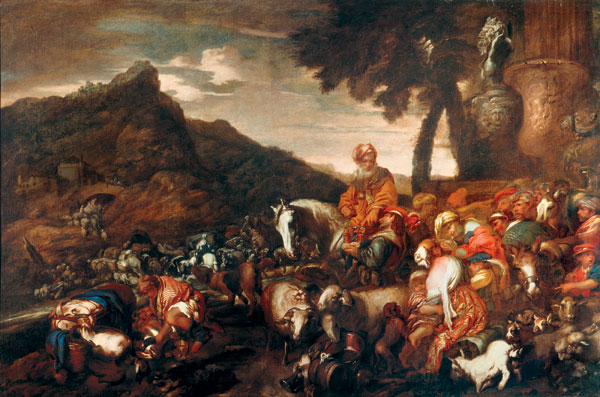Image Details

Courtesy of the Collection Palazzo Rosso, Genoa, Italy; photo by Scala/Art Resource, N.Y.
Weary with travel, the turbaned patriarch Abraham rests beside the road, surrounded by his extended family and abundant livestock. The setting is uncertain in this 1652 work, “The Peregrination of the Family of Abraham,” by Italian artist Giovanni Bendetto Castiglione. The antiquities at far right—apparently Greek vases and columns—are, of course, inaccurate and anachronistic. But they are reminders of the scope of Abraham’s travels—from his homeland in Mesopotamia, to Canaan, then Egypt and back to Canaan.
As Jeffrey C. Geoghegan points out in the accompanying article, Abraham’s sojourn in Egypt is reminiscent of Israel’s Exodus experience. Both stories begin with a famine in Canaan, involve a run in with Pharaoh, and end with the Israelites’ departing hastily from Egypt during a time of plagues. As Geoghegan notes, Abraham’s story is deliberately cast in a way that shows he is not only the physical forefather of Israel; he is Israel’s true spiritual father, whose very life foreshadows the nation’s own experiences with God.
